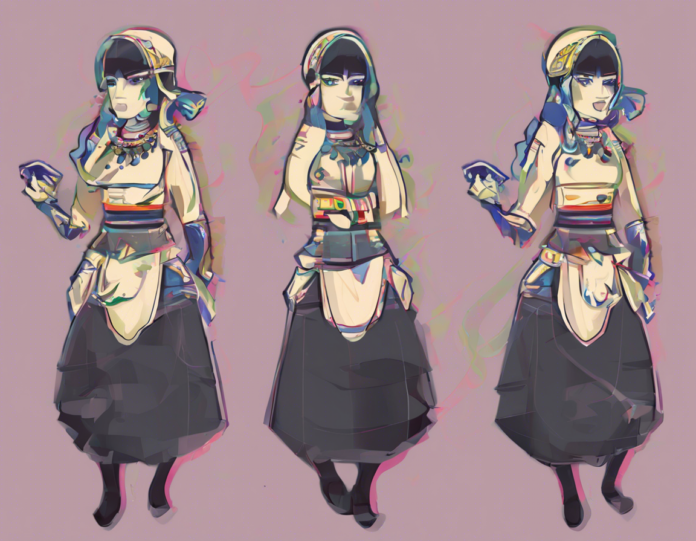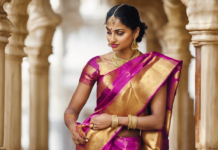Fashion is an ever-evolving industry, with new trends and styles constantly emerging. As we navigate through the fast-paced world of fashion, it’s crucial to stay updated on the latest trends and insights. In this article, we delve into the realm of fashion with renowned fashion designer Saamya Jainn, who shares her expertise on key trends that are shaping the industry today.
Embracing Sustainable Fashion
Sustainable fashion has been a prominent trend in recent years, with consumers becoming more conscious of the environmental impact of the fashion industry. Saamya Jainn emphasizes the importance of sustainability in fashion, highlighting the need for eco-friendly materials, ethical manufacturing practices, and waste reduction. Designing with the planet in mind is not just a trend but a responsibility that all fashion brands should embrace.
Gender-Neutral Fashion
Gender-neutral fashion is breaking boundaries and challenging traditional norms in the industry. Saamya Jainn predicts that gender-fluid designs will continue to gain momentum, blurring the lines between masculine and feminine styles. This inclusive approach to fashion allows individuals to express themselves freely, regardless of gender stereotypes.
Key elements of gender-neutral fashion:
- Versatile silhouettes
- Neutral color palettes
- Androgynous designs
The Rise of Digital Fashion Shows
In the wake of the global pandemic, digital fashion shows have become the new norm. Saamya Jainn discusses how virtual fashion presentations have revolutionized the way designers showcase their collections, reaching a wider audience across the globe. While traditional runway shows will always hold a special place in the industry, the accessibility and innovation of digital platforms offer a new dimension to the fashion experience.
Revival of Vintage Styles
Vintage fashion continues to make a comeback, with retro styles from past decades inspiring modern designs. Saamya Jainn explores the nostalgia and timeless appeal of vintage fashion, incorporating elements from the 60s, 70s, 80s, and 90s into her collections. From bold prints to statement accessories, vintage aesthetics add a touch of classic charm to contemporary wardrobes.
Iconic vintage trends:
- Boho-chic
- Power shoulders
- Retro florals
Sustainability in Fabrics
The choice of fabrics plays a significant role in the sustainability of fashion. Saamya Jainn advocates for the use of eco-conscious materials such as organic cotton, hemp, and Tencel in her designs. These fabrics not only reduce the environmental impact of clothing production but also offer durability and comfort for the wearer.
Eco-friendly fabrics to watch out for:
- Organic cotton
- Hemp
- Tencel
The Influence of Street Style
Street style has become a major influence in high fashion, with urban aesthetics blending seamlessly with luxury brands. Saamya Jainn draws inspiration from street culture, incorporating edgy details and urban influences into her collections. The fusion of street style with high-end fashion reflects the dynamic and diverse nature of contemporary trends.
Key elements of street style:
- Athleisure
- Graphic tees
- Sneaker culture
Beauty in Diversity
Diversity and inclusivity are integral to the future of fashion. Saamya Jainn celebrates the beauty of diversity, promoting representation of varied cultures, body types, and backgrounds in her designs. By embracing diversity, fashion becomes a platform for empowerment, self-expression, and unity across communities.
Fashion Forecast: Looking Ahead
As we look ahead to the future of fashion, Saamya Jainn envisions a landscape that embraces innovation, sustainability, and inclusivity. The evolution of fashion trends will continue to unfold, driven by a collective commitment to creativity, responsibility, and authenticity. By staying attuned to the pulse of the industry and championing positive change, we can shape a more vibrant and progressive fashion world for generations to come.
Frequently Asked Questions (FAQs)
1. What is sustainable fashion, and why is it important?
Answer: Sustainable fashion refers to clothing and accessories that are designed, manufactured, distributed, and used in an environmentally friendly way. It also encompasses ethical practices that prioritize the well-being of workers and communities. Sustainable fashion is important because it reduces the negative impact of the fashion industry on the environment and promotes ethical standards in production.
2. How can I incorporate sustainable fashion into my wardrobe?
Answer: You can support sustainable fashion by opting for clothing made from eco-friendly materials like organic cotton, linen, recycled fibers, or Tencel. Additionally, shopping from ethical and transparent brands, practicing clothing care techniques to extend the lifespan of your garments, and thrifting or swapping clothes are great ways to embrace sustainable fashion in your wardrobe.
3. What are some tips for styling gender-neutral fashion?
Answer: To style gender-neutral fashion, focus on versatile pieces like tailored blazers, oversized shirts, wide-leg trousers, and unisex sneakers. Experiment with mixing and matching traditional menswear and womenswear items, incorporate neutral colors and minimalist accessories, and embrace fluid silhouettes that defy traditional gender norms.
4. How can I stay updated on the latest fashion trends?
Answer: To stay updated on the latest fashion trends, follow fashion influencers and designers on social media platforms, attend fashion shows and events, read fashion blogs and magazines, and explore online trend forecasting websites. Engaging with the fashion community and experimenting with different styles will also help you stay ahead of the curve.
5. Why is representation and diversity important in the fashion industry?
Answer: Representation and diversity are crucial in the fashion industry as they reflect the multifaceted nature of society and challenge outdated beauty standards. By embracing diversity in race, body size, age, gender, and culture, fashion brands can create a more inclusive and empowering environment that resonates with a wide range of consumers and promotes self-expression and acceptance.









